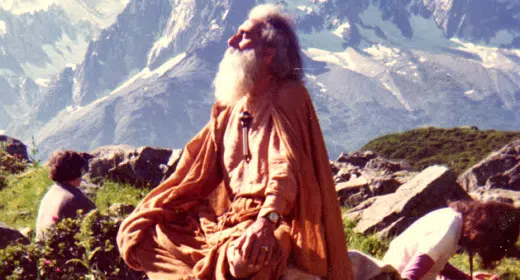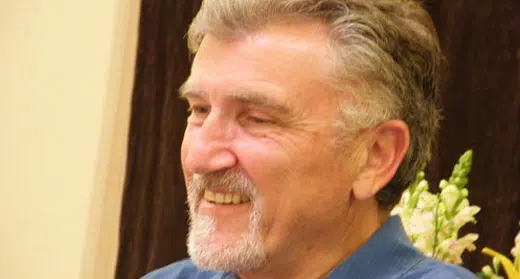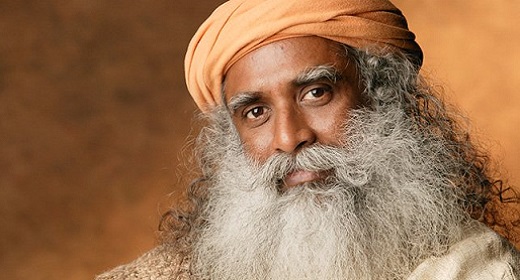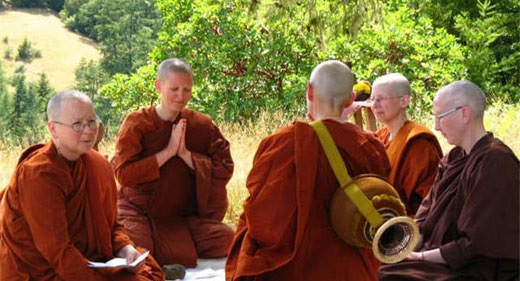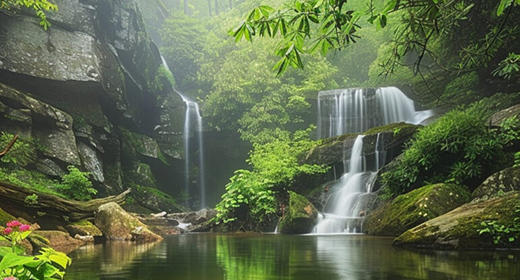Dhammananda Bhikkhuni: A female revolution is undermining the hegemony of men in monastic orders Buddhist in Thailand,
although the official hierarchy refuses to accept the congregations of nuns, or “bhikkhunis”. In recent years, a group of nuns pioneers have been revived in Thailand the monastic tradition of women initiated by Buddha more than 2,500 years ago with small communities who have a growing popular support.
While female monastic orders had continuity in countries of Mahayana, such as China or Taiwan Buddhist school, Theravada, predominant in Sri Lanka, Burma (Myanmar) or Thailand branch, disappeared centuries ago.
“I would say that the Buddha ordered women mean that, to show respect, should revive the female ordination,” explains the Thai Chatsumarn Kabilsingh, who adopted after his ordination as a bhikkhuni Dhammananda name nine years ago in Sri Lanka.
Dhammananda, the first nun Theravada in Thailand, was found to return to his country with widespread rejection, but over the years it has gained supporters.
‘Outlaw’
The hierarchy, or “sangha”, Thai Buddhist opposes officially recognize his congregation, though his authority exercises less control over than believers in Islamic or Christian confession.
“If we continue doing things well, it will take time, but eventually we will reach there (official recognition),” says Dhammananda, with head and eyebrows fast and dressed a tunica saffron, like monks, or “bhikkhus”.
Currently, a dozen nuns live permanently in the Songdhammakalyani monastery, located one hour by road from Bangkok and founded four decades ago by Dhammananda mother, Voramai, who was also a pioneer as the first Thai ordered according to the Mahayana ritual.
Songdhammakalyani fulfills the functions of any temple, but cannot be called so because the Act, conditioned by the “sangha”, still does not allow it.
Even so, nuns go out to collect food offerings to the dawn, as religious Buddhists, organize ceremonies and recite the prayers in pali on holidays which was attended by lay men and women. “They seem well what they are doing. I come here to accompany my mother, who supported them for years. It doesn’t matter that they are not recognized by the ‘sangha’ “, says a believer out of a ceremony with the”bhikkhunis”.
The monastery also hosts the nuns of lower sorting or “mae chi” they dress in white, still one smaller number of precepts, which they are not permitted to officiate at ceremonies.
The “sangha” and much of the monks reject female orders because, according to them, the tradition has never existed in the Theravada stream nor in Thailand (or the kingdoms that currently occupy the Asian nation).
However, Dhammananda defends that there is clear historical evidence about the existence of “bhikkhunis” in Sri Lanka and from the time of the Buddha himself, who established four pillars: “bhikkhus’, ‘bhikkhunis”, laymen and secular.
“Buddha was the first religious leader to recognize that women could have the same virtues of the man and, therefore, attain”nibbana”(nirvana) in an era in which it was thought that women could not be pure spiritually,” recounts the Abbess.
Five years after ordering the first monks, Buddha ordered her godmother and aunt, and the other 500 women as “bhikkhunis”.
However, equality is not complete because the male order born five years earlier and, according to the Buddhist treaties, nuns must show respect for their male colleagues, although “is younger and less experienced”, says Dhammananda.
In any case, the “bhikkhuni” is satisfied with the progress made in recent years and that translates into 40 nuns in various monasteries scattered in different provinces of Thailand.
As she herself wrote in a poem a few years ago: “I’m just a small crack in the wall; the wall of patriarchy; on the wall of the hierarchy; on the wall of injustice. Soon there will be more cracks and someday the wall will fall.”

